Keynote Speaker
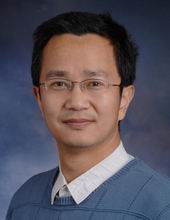 Yichuan Zhao
Professor
Yichuan Zhao
Professor
Department of Mathematics&Statistics
Georgia State University
Speech title: A Nonparametric Approach for Partial Areas Under ROC Curves
Abstract: The receiver operating characteristic (ROC) curve is a well-known mea- sure of the performance of a classification method. Interest may only pertain to a specific region of the curve and, in this case, the partial area under the ROC curve (pAUC) provides a useful summary measure. Related measures such as the ordinal dominance curve (ODC) and the partial area under the ODC (pODC) are frequently of interest as well. Based on a novel estimator of pAUC proposed by Wang and Chang (2011), we develop nonparametric ap- proaches to the pAUC and pODC using normal approximation, the jackknife and the jackknife empirical likelihood. A simulation study demonstrates the flaws of the existing method and shows proposed methods perform well. Sim- ulations also substantiate the consistency of our jackknife variance estimator. The Pancreatic Cancer Serum Biomarker data set is used to illustrate the proposed methods.
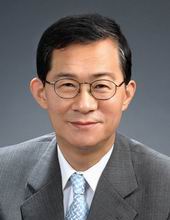 YoungPak Lee
Distinguished Professor
YoungPak Lee
Distinguished Professor
Department of Physics
Hanyang University, Seoul, Korea
Speech title: Metamaterials for electromagnetically-induced transparency and the applications
Abstract: Electromagnetically-induced-transparency (EIT) phenomena, perfect absorption and super-lensing of electromagnetic (EM) microwaves using metamaterials (MMs) have been studied vigorously recently for the possible applications in sensor, EM-wave cautery, hyper-transmitter, super-lens, EM compatibility, solar energy, bolometer, etc. Recently, the coherent processes, leading to EIT, have been observed in MMs. This can relax dramatically the difficulty in the experimental realization because of the room-temperature operation and of no need for external activation by pumping lasers. The MM structures reveal the EIT-like phenomena which are the result of Fano-type linear destructive interference among the artificial resonant elements. The phenomena are obtained by the broken structural symmetry or by the near-field subwavelength-scale coupling. The latter origin of EIT can be interpreted by the near-field coupling between a radiative bright resonator that couples strongly with the incident light, and a dark resonator that couples weakly with light. However, the EIT-like behavior also occurs without the dark-mode excitation, which is described by the interference between bright modes. In addition, the EIT-like effect, based on the phase coupling, can be switched by adjusting the incident angle.
We demonstrated experimentally that a controllable EIT-like spectral response at microwave frequencies can be obtained in MMs. The present design consists of two snake-shape resonators (SRs) with one and two bars. At the same time, each resonator is constructed at the top and the bottom layers. In our scheme, phase coupling between two SRs (assigned as the bright mode), which is activated by incident EM field, can lead to the EIT-like effect. Furthermore, we confirmed that the EIT-like feature could be controlled by simply varying the bar length of two different SRs. Our work proposes the alternative way to acquire the tunable EIT-like effect and these results reflect the possibility for achieving in slow-light devices and novel sensors.
The EIT-like effects in planar and non-planar MMs were investigated for microwave (GHz) frequencies. The used specific MMs consisted of a cut-wire resonator (CWR) and a ring resonator (RR), where were placed on the top and the bottom layers, respectively. By placing two types of resonators in this way, they can have different phases. This allows us to have the classical analogue of EIT-like effect due to the phase coupling between CWR and RR, which leads to the enhanced transmission in the microwave range. A transmission window was produced, due to the interference between bright- and bright-mode coupling. Using the numerical and the experimental results, we demonstrate that the bending of MM leads to enhanced transmission and bandwidth, as well as an additional EIT-like peak. This provides an effective way of realizing the tunable devices, including the switching sensors. This work was supported by the ICT R&D program of MSIP/IITP, Korea (2013-0-00375), and by the NRF fund by MSIP, Korea (No. 2017R1A2B4003916).
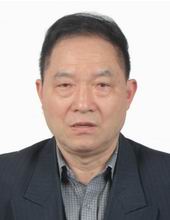 Pang Xiao Feng
Professor
Pang Xiao Feng
Professor
Institutes of physical electron and life science and technology
University of Electronic Science and Technology of China
Speech title: The difficulties and contradictions of quantum mechanics and their eliminations
Abstract: The difficulties and contradictions of quantum mechanics, which is the foundations of model science, are first exhibited and elucidated in detail and systematically by a large number of experimental facts and theoretical results obtained from the solutions of basic Schrödinger equation in virtue of their comparisons with the objective and intrinsic features of the microscopic particles having wave and corpuscle. These existed difficulties and contradictions focus mainly the properties of basic Schrödinger equation, of which the solutions have only a wave feature, not corpuscle feature due to the fact that no other interactions can be used to restrain the dispersed effect of microscopic particle arising from the kinetic energy in Hamiltonian of the systems, thus quantum mechanism describes only the wave feature, cannot represent the wave-corpuscle duality of microscopic particles. This is fully not consistent with people’s traditional knowledge. These results lead to a series of difficulties and contradictions in quantum mechanics, which is only an approximate theory. In such a case it is very necessary to eliminate and solvate these difficulties and contradictions for promoting the development of quantum mechanics toward. Our research discovered that these difficulties and contradictions can be eliminated, if a nonlinear interaction, such as , that is closely related the states of microscopic particles, is added in the basic Schrödinger equation and Hamiltonian. From the solutions obtained from different Schrödinger equation containing we affirmed that they have a evident and clear wave-corpuscle duality because the nonlinear interaction restrained now the dispersed effect of microscopic particle arising from the kinetic energy, then the microscopic particles are localized. This means that the microscopic particles described by the Schrödinger equation including the nonlinear interaction possessed certainly a wave-corpuscle duality, which corresponds perfectly with their intrinsic features. Then the difficulties and contradictions of quantum mechanics were through eliminated. Meanwhile, we investigated and elucidated further the real and wide existences of the nonlinear interaction in all physical systems, they are formed and produced by means of four mechanisms of self-interaction, self-trapping, self-focusing and self-localized. Thus we affirmed and confirmed that the dynamic properties of microscopic particles should be described by the nonlinear Schrödinger equation, instead of linear Schrödinger equation in quantum mechanics.
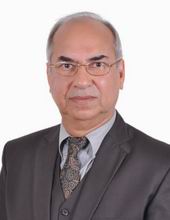 Chaudry Masood Khalique
Professor
Chaudry Masood Khalique
Professor
Mathematical Sciences
North-West University, South Africa
Speech title: Applications of Lie group analysis to Differential Equations
Abstract: Lie group analysis was established by the Norwegian mathematician Marius Sophus Lie (1842-1899) in the latter half of the nineteenth century. This approach systematically unites and broadens the well-known ad hoc techniques to construct exact solutions for differential equations, especially for nonlinear differential equations. In this talk we present briefly Lie’s theory and its applications to differential equations.
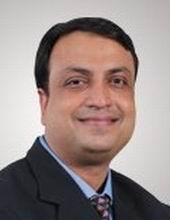 Praveen Agarwal
Professor
Praveen Agarwal
Professor
Department of Mathematics
Anand International College of Engineering, India
Speech title: Certain Extensions of the Riemann-Liouvilletype fractional derivative operator
Abstract: In this paper, by using the extended type beta function, establish the new extended definition for the Riemann-Liouville fractional derivative operator and discusses its properties. Also, we establish the some relations to extended special functions of two and three variables via generating functions.
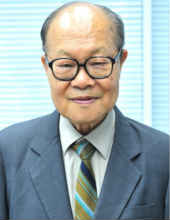 Lixing Zhou
Professor
Lixing Zhou
Professor
Tsinghua University, China
Department of Engineering Mechanics
Speech title: Developing Large-Eddy Simulation of Swirling Gas and Coal Combustion Using SOM and EBU Combustion Models
Abstract: Swirling gas combustion and two-phase combustion (spray-air or pulverized solid-fuel-air combustion) are widely encountered in gas-turbine and rocket combustors, internal combustion engines and furnace burners. In experimental studies of practical combustors frequently it is difficult to get the detailed information inside the combustors. For numerical simulation, most of it is Reynolds-averaged (RANS) modeling, which cannot give detailed flow and flame structures. Some investigators reported their results using large-eddy simulation (LES) using different combustion models. The present author and his colleagues did systematic LES studies on swirling gas combustion and coal-air two-phase combustion using second-order moment (SOM) and EBU combustion models. The statistic results are well validated by the measurement results. The instantaneous results show the comparison among different flow and flame structures for different cases. The present paper is a summary of these studies.
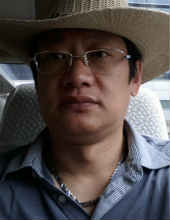 Wenjian Liu
Professor
Wenjian Liu
Professor
Peking University, China
Colleage of Chemistry and Molecular Engineering
Speech title: An Iterative Vector Interaction Method for Large Eigensystems
Abstract: Based on the generic “static-dynamic-static” framework for strongly coupled basis vectors, an iterative Vector Interaction (iVI) method is proposed for computing multiple exterior or interior eigenpairs of large symmetric/Hermitian matrices. Although it works with a fixed-dimensional search subspace, iVI can converge quickly and monotonically from above to the exact exterior/interior roots. The efficacy of iVI is demonstrated by taking both mathematical and physical matrices as examples.